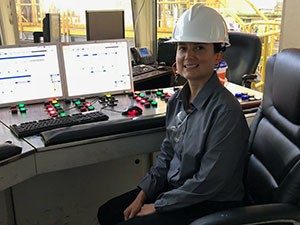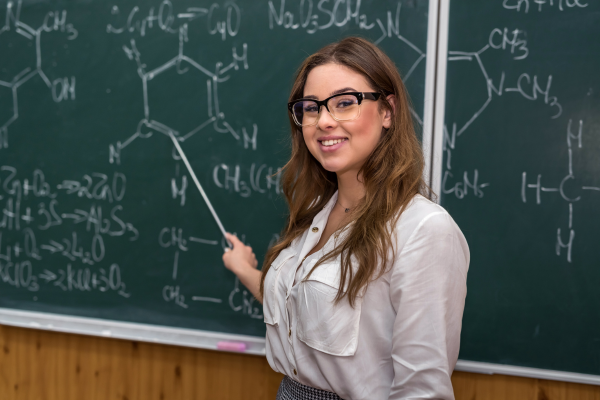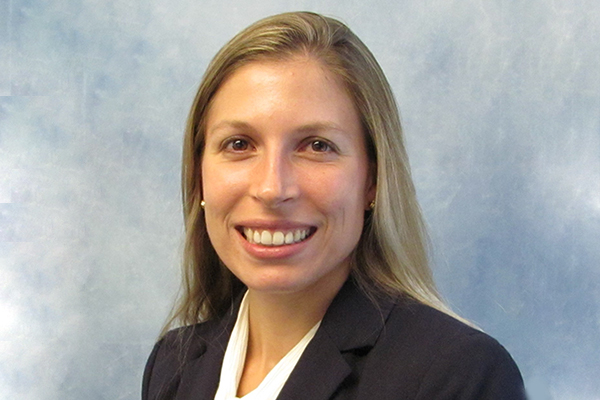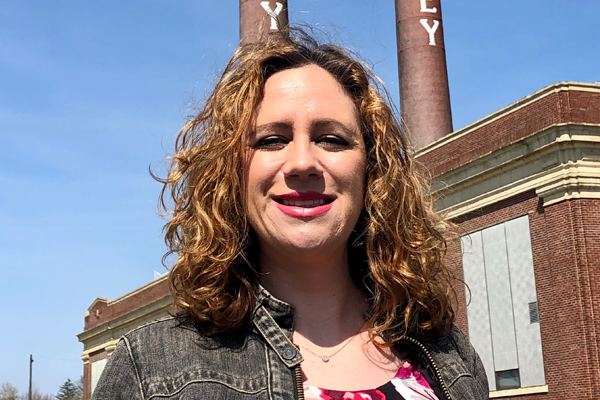By: Neil Savage, special to C&EN
Nancy Ortiz thought she’d like to be a detective. She grew up in Eagle Pass, Texas, a small border town where the adult jobs she saw were mainly teacher, police officer, or Homeland Security personnel. So when she transferred from community college to Sam Houston State University in Huntsville, Texas, she declared her major as criminal justice. When she won a 10-week internship with the Federal Bureau of Investigation, she got to spend time at the FBI’s laboratory in Quantico, Virginia.
“This was what exposed me to science,” Ortiz says. “I thought, ‘Wow. I can still be a detective, but I can be a detective in the laboratory.’”
She graduated with degrees in both criminal justice and chemistry, and went on to a Ph.D. chemistry program at Indiana University Bloomington, earning her degree in 2014. After interning with the US Department of Energy, she became a senior research chemist at Exxon Mobil, developing biorenewable engine oils and lubricants suited to race cars.
Since 2017, Ortiz has been a development chemist at Quaker Houghton in Pennsylvania. She designs rolling oils that act as lubricants in steel mills. Such mills start with hot slabs of steel that may be 20-30 cm thick and reduce them to sizes as small as a quarter inch. They do so by pressing them between rollers, with the ultimate thickness determined by how much pressure is applied. Ortiz works with each mill to understand its individual setups, as well as the type of finish the customer wants, then uses that information to design a custom-made lubricant with the necessary properties, such as viscosity and hydrophobicity, to withstand the process and produce the desired steel parts.
Mindful of where she came from, she talks to students at her old high school and in elementary schools near her home in Pennsylvania, as well as to UnidosUS, a group serving Latinos. Seeing that a woman of color from a small town can be a chemist could open their eyes to new possibilities, she hopes.
What’s usually in your lab coat pocket?
Earplugs. I run tests that simulate the steel mill, which can be pretty loud.
What’s your favorite experiment?
In graduate school, when I synthesized nanoparticles. Working with metals you would get really cool colors.
What can’t you live without in the lab?
A 12-month calendar. Experiments go for several days, and it helps me plan my week.
Is there a problem that keeps you up at night?
Planning my wedding in Mexico next year.
What’s the best advice you’ve ever received?
“The worst you can hear is no.” I’ve been able to accomplish a lot by not being afraid to just ask.
Who’s your science hero?
I don’t really have one. I share a birthday with Nikola Tesla.
What’s the most important product you’ve worked on?
The evaluation of biorenewable engine oils, because of its impact on the environment. Formulating oils for NASCAR was really exciting.
Do you have any hobbies?
I’m learning folkloric Mexican dancing, which is basically tap dance.
What’s your favorite social lubricant?
Bourbon on the rocks or whiskey on the rocks.

Neil Savage is a freelance contributor to Chemical & Engineering News, the newsmagazine of the American Chemical Society. This interview was edited for length and clarity.









